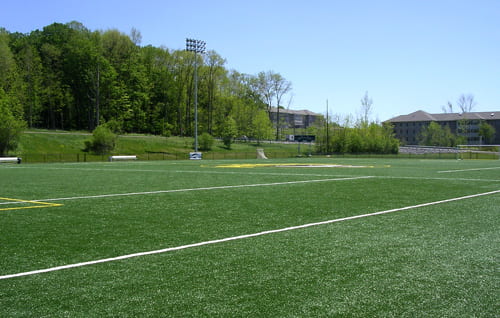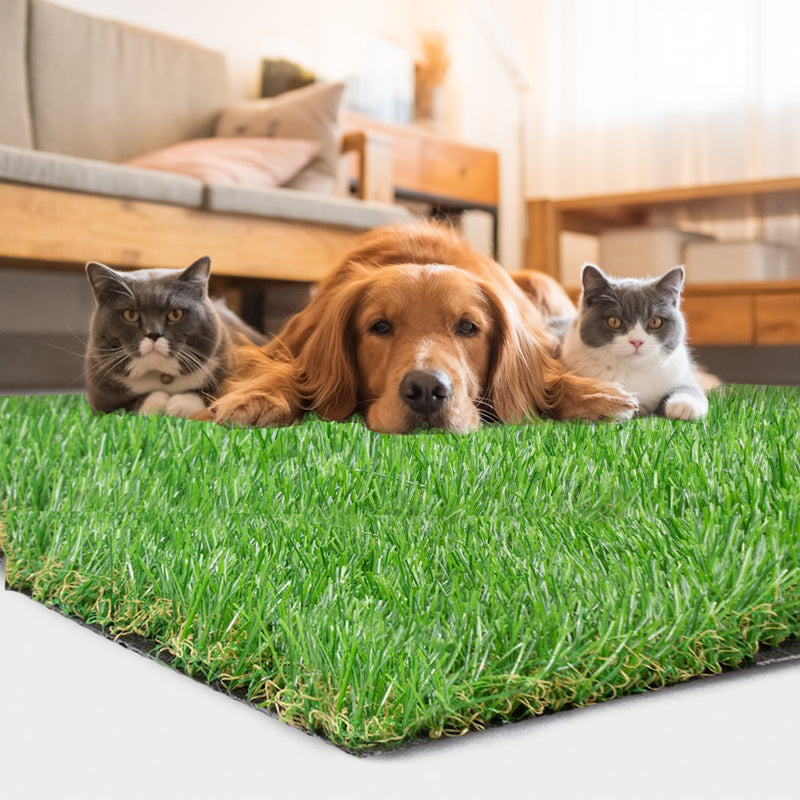Custom Turf Installation Phoenix AZ for Residences, Companies, and Play Areas
Custom Turf Installation Phoenix AZ for Residences, Companies, and Play Areas
Blog Article
Look Into the Environmental Advantages of Opting for Artificial Turf Solutions
The adoption of artificial turf remedies provides a compelling chance to deal with pushing ecological difficulties. By substantially minimizing water usage and decreasing the application of damaging chemicals, these options not just advertise sustainable landscaping but likewise secure local communities.
Water Conservation Benefits
One of the most considerable benefits of synthetic grass is its capability to preserve water. Conventional grass yards require considerable irrigation, specifically in areas prone to drought or water limitations. On the other hand, synthetic lawn does not need watering, considerably reducing the overall need for water resources. This function is especially helpful in dry regions where water scarcity is a pushing worry.
By eliminating the demand for routine watering, man-made turf contributes to sustainable landscape techniques and aids alleviate the environmental influence of excessive water usage. The conservation of water expands to the decrease of drainage, which can lead to dirt erosion and river contamination.
Additionally, the installation of synthetic grass enables property owners and municipalities to allot water resources much more efficiently, concentrating on vital usages such as alcohol consumption water and agriculture. The shift towards synthetic grass not only promotes accountable water use however likewise straightens with broader environmental goals focused on maintaining natural deposits.
As neighborhoods progressively prioritize sustainability, the water preservation benefits of synthetic turf offer a compelling situation for its fostering in domestic and commercial landscape design jobs.
Decreased Chemical Use
The transition to artificial lawn dramatically lowers the dependence on chemical treatments typically made use of in all-natural grass maintenance. Conventional lawn administration typically entails the application of herbicides, pesticides, and fertilizers to advertise development and control bugs. These chemicals can posture dangers to human wellness, neighborhood wild animals, and the atmosphere, adding to soil and water contamination.
In contrast, man-made lawn removes the need for these hazardous materials. By lessening the launch of artificial compounds into the ecological community, synthetic turf advertises much healthier dirt and water systems.
Furthermore, the absence of chemical runoff related to synthetic grass setups aids shield local waterways from pollution, supporting water life and keeping biodiversity. Arizona artificial turf. As areas significantly prioritize sustainable techniques, choosing synthetic grass presents a sensible remedy that aligns with environmental preservation objectives. Through this change, home proprietors can delight in rich environment-friendly areas without jeopardizing ecological health and wellness, paving the way for a much more lasting future
Lower Carbon Impact

Moreover, the setup of fabricated lawn can result in substantial water conservation. All-natural grass require substantial amounts of water for irrigation, which not only includes in the carbon footprint connected with water removal and treatment but additionally stress local water resources. In comparison, synthetic grass requires very little maintenance, calling for no watering, therefore considerably minimizing water usage and its associated energy prices.
In addition, the longevity of synthetic grass adds to its decreased carbon effect. With a lifespan of approximately 15 years or more, the requirement for constant substitutes is reduced, resulting in much less waste and lower energy usage in production and getting rid of standard grass choices. In general, synthetic grass provides a sustainable option for environmentally mindful landscape design.
Environment Preservation
Environment preservation is a critical consideration in the dispute over landscaping choices, specifically when comparing man-made grass to natural grass. All-natural lawn lawns commonly need extensive upkeep, consisting of the usage of herbicides, chemicals, and fertilizers, which can adversely influence neighborhood communities. These chemicals can leach right into the dirt and rivers, harming native vegetation and animals and interrupting local habitats.
In comparison, synthetic grass offers a chance to minimize the environmental footprint of landscape design. By going with artificial lawn, homeowners can decrease the interruption of natural environments connected with typical lawn care techniques. Artificial lawn eliminates the demand for dangerous chemicals, thereby protecting close-by wild animals and maintaining the stability of bordering ecological communities. The installment of man-made lawn can lead to the conversion of former yard locations into even more biodiverse landscapes, such as pollinator gardens or native plant locations, which can sustain use this link local wild animals.
Ultimately, the change to synthetic grass not just preserves water and lowers upkeep initiatives but additionally cultivates an extra unified relationship in between human activities and the native environment, promoting habitat conservation while doing so.
Long-Term Sustainability
Long-term sustainability is an important consider evaluating the benefits of synthetic grass over standard turf yards. Among one of the most substantial advantages of synthetic grass is its durability; it can last approximately 15-20 years with very little upkeep, whereas all-natural lawn needs frequent reseeding and substitute. This long life reduces the need for consistent sources, such as water, plant foods, and chemicals, which are crucial for maintaining a healthy and balanced yard yard.
Additionally, fabricated grass adds to a reduction in carbon discharges connected with lawn care tools. Traditional lawns typically require gas-powered lawn mowers, leaners, and blowers, every one of which contribute to air contamination. Arizona turf. On the other hand, synthetic grass eliminates the requirement for such equipment, advertising a cleaner setting
In addition, the manufacturing of fabricated turf significantly uses recycled products, boosting its sustainability profile. As manufacturers embrace environment-friendly methods, the ecological footprint of man-made turf remains to decrease.

Conclusion
The adoption of synthetic grass options provides considerable environmental benefits, consisting of significant water conservation, decreased dependence on damaging chemicals, and a reduced carbon footprint. Man-made lawn aids in protecting all-natural habitats by decreasing land disturbance and promoting long-lasting sustainability via the use of sturdy products. Collectively, these variables highlight the potential of synthetic grass to contribute positively to ecological wellness and use a viable option to conventional landscaping techniques in a progressively resource-conscious world.
In comparison, artificial this page turf does not require watering, considerably decreasing the total need for water resources. By decreasing the launch of synthetic substances right into the community, artificial lawn advertises much healthier soil and water systems.
Additionally, the setup visit their website of fabricated turf can result in substantial water preservation. In comparison, fabricated turf needs marginal maintenance, needing no watering, thus dramatically decreasing water use and its associated power expenses.

Report this page